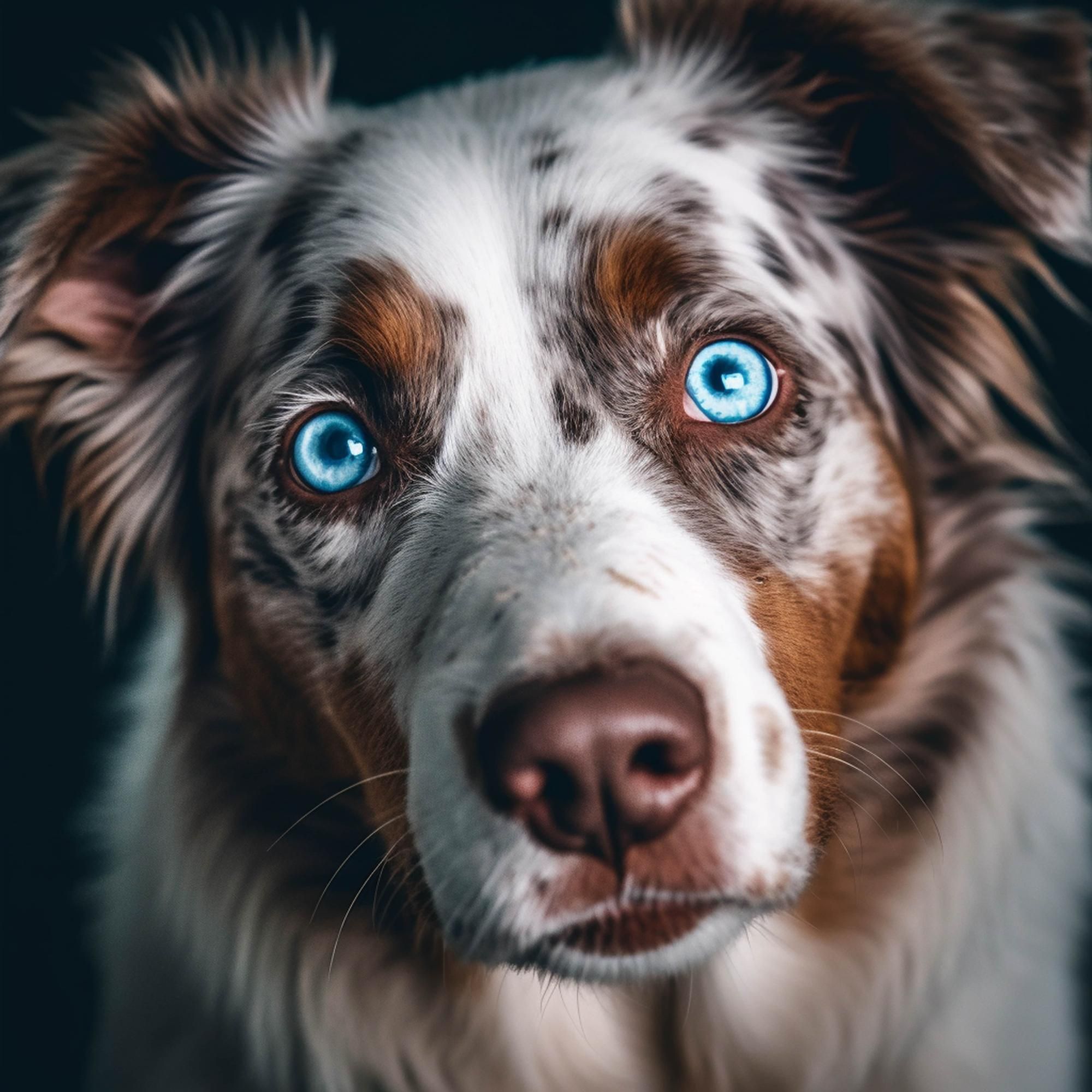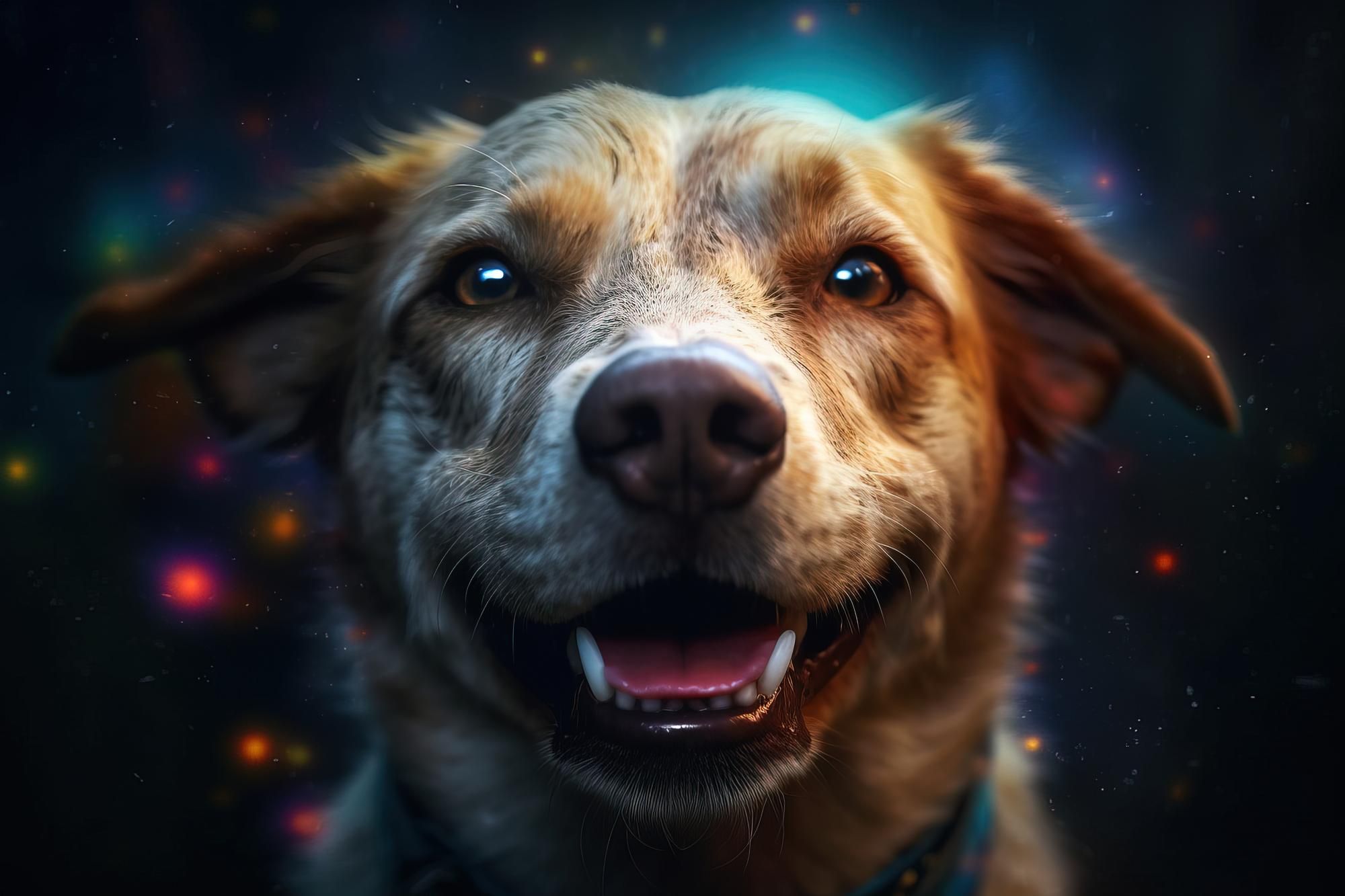The phenomenon of dogs' eyes glowing in the dark has long been a mystery. Many pet owners have witnessed this effect and ever wondered what causes it. This article aims to delve into the science behind the glow and uncover its evolutionary advantages.
By understanding why dogs' eyes glow in the dark, pet owners can gain a deeper appreciation for their four-legged friends and better care for their eye health. While it may seem like an otherworldly trait, a scientific explanation exists for why dogs' eyes glow in low light conditions.
The tapetum lucidum, a reflective layer located at the back of their eye, is crucial in enhancing their night vision. Understanding how this unique adaptation works can help pet owners appreciate their dog's abilities and ensure proper eye care.
Furthermore, debunking any myths or misconceptions surrounding this topic can help dispel any unnecessary fear or superstition associated with the glowing effect.
Why Do Dogs Eyes Glow in Dark Places?

In dark places, dogs' eyes glow due to the presence of a reflective layer called the tapetum lucidum. This layer is located behind the retina in the eye and acts like a mirror, reflecting light back through the retina and giving it two chances to be absorbed by cells that help with vision.
The tapetum lucidum amplifies available light and enhances dogs' night vision capabilities. The reflected light from the tapetum lucidum also increases their optic nerve's sensitivity, allowing them to see better in dimly lit environments.
This adaptation is especially helpful for nocturnal animals like wolves or coyotes that hunt at night. Overall, this unique feature helps dogs navigate in low-light conditions and gives them an edge over other animals that lack this extra layer in their eyes.
Why Do Dog's Eyes Glow Different Colors?

Revealing the hidden truth behind the phenomenon, the color of a dog's eye shine is determined by the presence and amount of certain pigments in their retina. The glowing eyes are due to a layer of tissue called tapetum lucidum.
Which acts as a reflective surface that enhances their vision in low-light conditions. This layer is present in most animals that hunt at night, allowing them to see in much dimmer light than humans.
The color of a dog's glowing eyes varies depending on the breed and genetics. For example, some dogs have blue eyes or green glowing eyes caused by reflecting light differently due to structural differences in their tapetum lucidum.
Similarly, some dogs have a red or orange glow because they have less melanin in their iris, allowing more blood vessels to show through. Understanding these differences can provide insight into what makes your pet unique and how different breeds may excel better under specific environmental conditions.
Is Every Dog Eyes Glos in Dark?
The presence of a reflective layer called tapetum lucidum in a dog's eye can enhance its vision in low-light conditions. This layer acts like a mirror, reflecting light back through the retina and allowing the dog to see better in dimly lit environments. The tapetum is responsible for the familiar phenomenon of dogs' eyes glowing in the dark.
However, not all dogs have eyes that glow in the dark. In fact, only certain breeds possess this trait due to genetic variations. A green glow is commonly observed in some breeds such as Labrador Retrievers, Golden Retrievers, and Beagles, while others may emit an orange or yellowish glow.
While it may seem mysterious and even eerie to witness a dog's eyes glowing at night, it is simply a result of their biology.
The Science Behind the Glow: The Tapetum Lucidum
Through the presence of a reflective layer located at the back of the eye, known as tapetum lucidum, dogs are able to enhance their vision and see better in low-light conditions.
This structure is found in many nocturnal animals and acts like a mirror that reflects light back through the retina, allowing for more efficient use of available light.
The tapetum lucidum comprises layers of cells that contain crystals or fibers that reflect light. These cells are arranged in such a way that they create a smooth surface that reflects light back through the retina.
The purpose of this structure is to increase visual sensitivity by reflecting any available light back onto the retina, which allows for better detection of objects in low-light environments.
However, this reflection also causes the glowing effect seen in dogs' eyes when exposed to certain types of lighting. The color and intensity of this glow can vary depending on factors such as breed, age, and individual differences in eye anatomy.
Overall, it is clear that the tapetum lucidum plays an important role in enhancing dogs' vision and allowing them to navigate effectively even under challenging lighting conditions.
What is The Role of Light Reflection
By reflecting light back onto the retina, the tapetum lucidum plays a crucial role in enhancing dogs' vision and allowing them to see better in low-light conditions.
This structure behind the retina is responsible for the glowing effect that is often observed in dogs' eyes at night. It acts as a mirror, reflecting any incoming light back through the retina and increasing its sensitivity to even low light levels.
The tapetum lucidum is located right behind the retina and contains layers of reflective cells that are arranged like a series of mirrors. When light enters the eye, it passes through the lens and reaches the retina which absorbs some of it while reflecting most of it back through this layer.
This process increases visual sensitivity by capturing more light than would have been possible otherwise, thus enabling dogs to navigate their surroundings effectively at night or in dimly lit environments.
Evolutionary Advantages of Glowing Eyes
Interestingly, dogs are not the only animals that exhibit the glowing effect in their eyes. This phenomenon is also observed in other nocturnal mammals like dogs, cats, foxes, and some reptiles and birds. These animals possess a special layer of tissue called tapetum lucidum located behind the retina. It reflects light back to the photoreceptor cells, allowing them to see better in low-light conditions.
The evolutionary advantages of this adaptation are clear - it gives these animals an edge when hunting or navigating during nighttime hours. Here are four reasons why glowing eyes provide significant benefits:
1. Enhanced Night Vision: Tapetum lucidum allows for better vision in dimly lit environments by reflecting more light into the eye.
2. Wider Field of View: The reflective layer can increase peripheral vision by up to 50%, giving these animals a broader perspective on their surroundings.
3. Increased Sensitivity: The additional light sensitivity provided by tapetum lucidum allows for detecting even subtle movements or changes in lighting conditions that would be missed otherwise.
4. Camouflage Breaking Ability: The reflective nature of these animals' eyes makes it easier to spot them in dark environments, making it harder for prey or predators to hide from them.
While dog's eyes glow at night may seem like a mysterious trait, similar adaptations can be found across many species with enhanced night vision capabilities.
Natural selection has favored this feature due to its crucial role in survival under low-light conditions and providing significant evolutionary advantages over those without it.
Eye Glow and Health: Can It Indicate Underlying Issues?
As discussed in the previous section, dogs' glowing eyes serve a significant evolutionary advantage by enhancing their night vision. However, there is more to the story than just enhanced vision.
The glow in their eyes can also indicate underlying health issues that need attention. The glowing effect in dogs' eyes is due to a layer of tissue behind the retina called tapetum lucidum. This layer reflects light and helps them see better in low-light conditions.
However, if their eye glow appears different or unusual, it could indicate an underlying health problem such as cataracts or other eye conditions requiring medical attention.
Therefore, regular vet check-ups are crucial for maintaining good eye health and ensuring any potential issues are detected early on before they cause serious harm to your furry friend's vision.

Myths and Misconceptions About the Glowing Effect
Misconceptions about the glowing effect in dogs' eyes have led to unfounded and supernatural explanations that can cause unnecessary fear and concern for pet owners. The truth is that dogs' eyes glow in the dark due to a reflective layer called tapetum lucidum, which enhances their vision in low-light conditions.
However, some common myths and misconceptions surrounding this phenomenon still need clarification.
1. Myth: Dogs with blue or green eyes don't have the glowing effect.
Fact: All dogs have a tapetum lucidum, regardless of their eye color.
2. Myth: The glowing effect is caused by spirits or other supernatural forces.
Fact: The scientific explanation for the glowing effect lies in the structure of dogs' eyes and how they reflect light.
3. Myth: The glowing effect means that a dog has a superhuman vision.
Fact: While dogs do have better night vision than humans, their ability to see in low-light conditions is largely due to their high number of rods (light-sensitive cells) compared to cones (color-detecting cells).
Pet owners need to understand the science behind why dogs' eyes glow and not fall prey to unfounded beliefs about it. By debunking these myths and misconceptions, we can promote a more accurate understanding of our furry friends' unique visual abilities.
Frequently Asked Questions
Can dogs see better in the dark than humans?
Dogs have superior night vision compared to humans due to their larger pupils and higher number of light-sensitive cells in their eyes. This allows them to see better in low-light conditions but still rely on other senses like smell and hearing.
Is the glowing effect in dogs' eyes harmful to their vision?
The glowing effect in dogs' eyes, also known as eyeshine, is not harmful to their vision. It occurs due to the reflection of light off a layer called the tapetum lucidum, which enhances their night vision.
Do all dog breeds have the same glowing effect in their eyes?
A reflective layer causes the glowing effect in a dog's eyes called the tapetum lucidum. All dog breeds have this layer, but the glow color and intensity of the glow can vary depending on the breed's eye structure and pigmentation.
Can the color of a dog's eyes affect the intensity of the glowing effect?
The color of a dog's eyes can influence the intensity of its glowing effect. The amount of pigment in the eye affects how much light is reflected back, resulting in variations in brightness. Symbolically speaking, understanding this concept unlocks a key to mastering canine physiology.
Are there any ways to prevent the glowing effect in dogs' eyes from being visible in the dark?
The glowing effect in dogs' eyes can be minimized by avoiding direct light sources, using ambient lighting, or adjusting camera settings. However, complete prevention is not possible due to the reflective layer in their eyes called tapetum lucidum.

Conclusion
As we unravel the mystery of our canine friends' ghostly green or red eyes, we learn that it's the result of a unique structure in the back of their eyes, located between the optic nerve and the retina, known as the tapetum lucidum. This marvel of nature allows dogs and cats to see better in dark conditions.
Giving the limited light available a second chance to hit the retina. The reflective property of the tapetum, which can be rich in zinc or riboflavin, is the reason behind the different color glowing eyes seen in photos and why dogs with white or light-colored eyes may seem to have an eerie glow.
However, it's essential to understand that not all dogs lack this feature, as seen when comparing the eyes of two dogs; one might glow the same color, while the other might react differently to bright light. In conclusion, the captivating glow in dogs' eyes in the dark is not merely a spooky phenomenon.
It's a testament to their evolutionary adaptations enabling them to navigate the world in dim light conditions, giving their retina a second chance to absorb that precious bit of light. Whether it's a bright or low light, we now have a clearer vision of why our dogs' eyes come alive in the dark.






